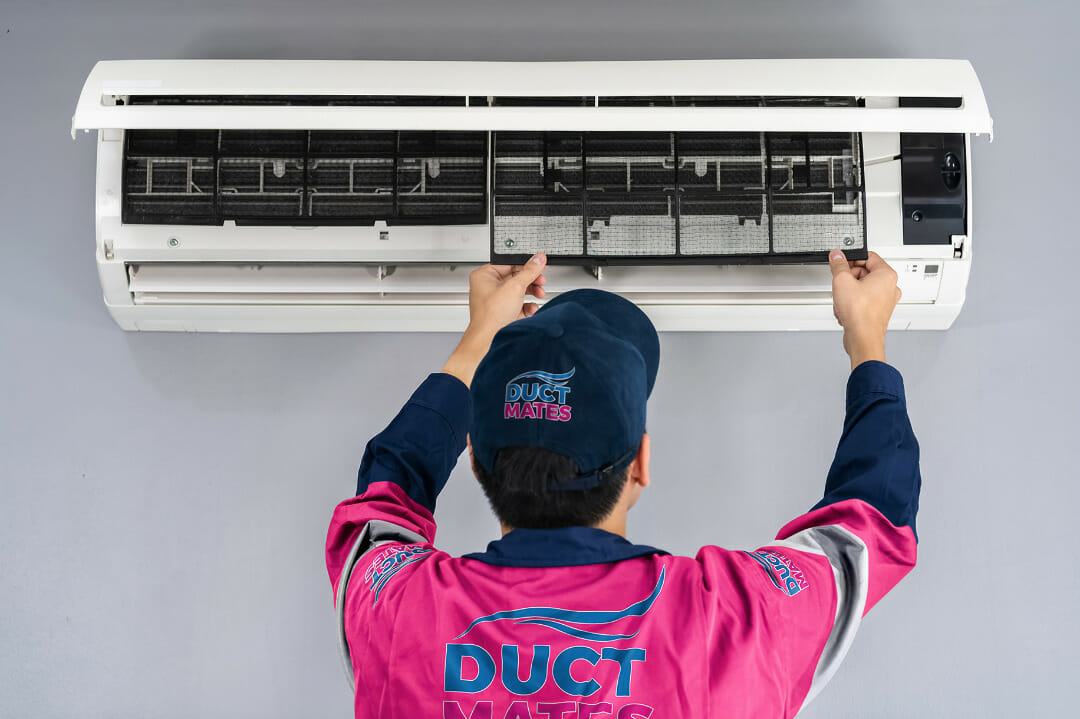As summer starts to heat up the days in Melbourne, most people would reach for their air conditioners to keep the temperature down. Laying down with the air conditioner on, you suddenly notice a smell- a musty and mouldy smell! Unfortunately, you may have a problem many other homeowners face as well; mould growth in your HVAC system. The musty smell from your air conditioner unit is actually the smell of mould spores. They are detrimental to your health and can lead to respiratory issues. So what can you do as a homeowner to stop the air conditioning smell?
Actually, that depends on where the source of the smell is coming from, and we have compiled a list of the three most common causes why mould grows and how you can prevent any growth in those locations.
#1: Evaporator Coils
Evaporator coils are a prime location for mould growth. As the coolant runs through the evaporator coils, it cools the air that would eventually reach your home. However, this also means that condensation on the coils would occur, and the dirt and debris inside the air circulation system will stick to the condensate. This suddenly becomes a perfect place for mould to grow: it is dark, damp and has an abundance of food (the dirt and debris).
Signs of evaporator coil mould:
Weak airflow from your supply vents and/or iced up evaporator coils.
What you can do:
You can significantly cut down on the dirt and debris within the air system by regularly changing your air filters. There are also UV germicidal lamps that help in preventing growth on the coils. Other than that, contacting professional help when mould has already set foot is the most reliable way of removing mould from evaporator coils. A good cleaning annually will ensure you will never face this problem again!
#2: Blockage of the Condensate Drainpipe
Remember the condensate buildup on the evaporator coils? In an ideal HVAC unit, the water will actually drip down to a drain pan, which has a small drainpipe that leads to a drain area. However, the drainpipe may get clogged sometimes, causing a buildup of the water in the drain pan. Similarly, the conditions are perfect for growth.
Signs of a clogged drainpipe:
Air conditioner unit shutdowns after running for a short while and/or you see water pooling around the inside unit.
What you can do:
First, make sure you know where your drain pipe leads to. Then, routinely check to ensure there are no blockages. If you suspect there is a clogged drainpipe, you can either try to unclog it yourself or contact professionals to do it for you.
#3: Leaky Air Ducts
Your air ducts are the highway for your air circulation; it routes the air around the whole house. Air ducts are supposed to be tightly sealed to keep the filtered air in and the bad air out. If the sealing around the air ducts fails, the ducts will actually suck in the bad air, mixing in the dirt and debris along with the filtered air. This excess dirt increases the chance of having growth inside your air ducts, which may lead to the musty smell.
Signs of a leaky air duct:
Insufficient cooling even if the air conditioner is on full blast, the humid feeling when using your air conditioning unit
What you can do:
You can try to determine where the leakages may be occurring and to seal up the air ducts. However, it is advised to contact professionals as sealing the ducts does not clear up the growth that’s already inside the air ducts. A full air duct cleaning will ensure you do not have any mould left in your HVAC system.
Do not hesitate to contact Duct Mates at 1300 238 287 or fill up this enquiry form if you face any of these problems! We will be glad to help you out.






